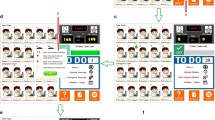Abstract
Our understanding of distributed decision making in professional teams and their performance comes in part from studies in which researchers gather and process information about the communications and actions of teams. In many cases, the data sets available for analysis are large, unwieldy and require methods for exploratory and dynamic management of data. In this paper, we report the results of interviewing eight researchers on their work process when conducting such analyses and their use of support tools in this process. Our aim with the study was to gain an understanding of their workflow when studying distributed decision making in teams, and specifically how automated pattern extraction tools could be of use in their work. Based on an analysis of the interviews, we elicited three issues of concern related to the use of support tools in analysis: focusing on a subset of data to study, drawing conclusions from data and understanding tool limitations. Together, these three issues point to two observations regarding tool use that are of specific relevance to the design of intelligent support tools based on pattern extraction: open-endedness and transparency.



Similar content being viewed by others
References
Alberts DS, Gartska JJ, Stein FP (2000) Network centric warefare: developing and leveraging information superiority. National Defense University Press, Washington
Albinsson P-A, Morin M (2002) Visual exploration of communication in command and control. In: Proceedings of the sixth international conference on information visualisation, London, UK
Albinsson P-A, Morin M, Thorstensson M (2004) Managing metadata in collaborative command and control analysis. In: Proceedings of the 48th annual meeting of the human factors and ergonomics society
Andriole SJ (1989) Handbook of decision support systems. TAB Books Inc, Blue Ridge Summit
Brehmer B (2005) The dynamic OODA loop: amalgamating Boyd’s OODA loop and the cybernetic approach to command and control. In: Proceedings of the 2005 command and control research and technology symposium
Cutting DR, Karger DR, Pedersen JO, Tukey JW (1992) Scatter/gather: a cluster-based approach to browsing large document collections. In: Proceedings of the 15th annual international ACM SIGIR conference on research and development in information retrieval
Flanagan JC (1954) The critical incident technique. Psychol Bull 51(4)
Fornell C, Bookstein FL (1982) Two structural equation models: LISREL and PLS applied to consumer exit-voice theory. J Market Res 19(4):440–452
Gorman JC, Foltz PW, Kiekel PA, Martin MJ (2003) Evaluation of latent semantic analysis-based measures of team communication content. In: Proceedings of the human factors and ergonomics society 47th annual meeting
Jensen E (2009) Sensemaking in military planning: a methodological study of command teams. Cogn Technol Work 11:103–118
Jenvald J, Eriksson M (2009) Structured reflective observation in continuing training. In: Proceedings of the 8th WANO human performance meeting
Johansson B, Persson M, Granlund R, Mattsson P (2003) C3fire in command and control research. Cogn Technol Work 5(3):191–196
Jöreskog KG (1973) A general method for estimating linear structural equation systems. In: Goldberger AS, Duncan OD (eds) Structural equation models in the social sciences. Seminar Press, USA
Klein G (1998) Sources of power. How people make decisions. MIT Press, Cambridge
Klein, GA, Orasanu, J, Calderwood, R, Zsambok, CE (eds) (1993) Decision making in action: models and methods. Ablex Publishing corporation, NY
Kruskal JB (1964) Multidimensional scaling by optimizing goodness of fit to a nonmetric hypothesis. Psychometrika 29(1)
Kylesten B, Nählinder S (2010) The effect of decision-making training: results from a command-and-control training facility. Cogn Technol Work 1–9. doi:10.1007/s10111-010-0157-0
Lazar J, Feng JH, Hochheiser H (2010) Research methods in human-computer interaction. Wiley, NY
Leifler O (2008) Combining technical and human-centered strategies for decision support in command and control—the ComPlan approach. In: Proceedings of the 5th international conference on information systems for crisis response and management
Leifler O, Eriksson H (2010) Message classification as a basis for studying command and control communications-an evaluation of machine learning approaches (Submitted for publication)
Miles MB, Huberman AM (1994) Qualitative data analysis: an expanded sourcebook. SAGE, CA
Morin M (2002) Multimedia representations of distributed tactical operations. PhD thesis, Institute of Technology, Linköpings universitet
Morin M, Albinsson P-A (2005) Creating high-tech teams: practical guidance on work performance and technology. Chapter exploration and context in communication analysis. APA Press, Washington, pp 89–112
Rosell M, Velupillai S (2008) Revealing relations between open and closed answers in questionnaires through text clustering evaluation. In: Proceedings of LREC 2008, Marrakesh, Morocco
Rubel RC (2001) War-gaming network-centric warfare. Naval War Col Rev 54(2):61–74
Sanderson P, Fisher C (1994) Exploratory sequential data analysis: foundations. Human Comp Interact 9:251–317
Sanderson P, Scott J, Johnston T, Mainzer J, Watanabe L, James J (1994) MacSHAPA and the enterprise of exploratory sequential data analysis (ESDA). Int J Human Comp Stud 41(5):633–681
Shattuck LG, Woods DD (2000) Communication of intent in military command and control systems. In: McCann C, Pigeau R (eds) The human in command: exploring the modern military experience. Kluwer Academic/Plenum Publishers, London, pp 279–292
Stanton N, Baber C, Walker G, Houghton R, McMaster R, Stewart R, Harris D, Jenkins D, Young M, Salmon P (2008) Development of a generic activities model of command and control. Cogn Technol Work 10:209–220. doi:10.1007/s10111-007-0097-5
Steiger JH, Schönemann PH (1978) Theory construction and data analysis in the behavioral sciences, chapter a history of factor indeterminacy. Jossey-Bass Inc, San Francisco
Thorstensson M, Axelsson M, Morin M, Jenvald J (2001) Monitoring and analysis of command post communication in rescue operations. Saf Sci 39:51–60
Wærn Y, Cañas JJ (2003) Microworld task environments for conducting research on command and control. Cogn Technol Work 5(3):181–182. doi:10.1007/s10111-003-0126-y
Acknowledgments
This work was supported by the Swedish National Defense College. We would like to thank the participants at the Swedish Defense Research Agency and VSL Systems AB for participating in this study.
Author information
Authors and Affiliations
Corresponding author
Rights and permissions
About this article
Cite this article
Leifler, O., Eriksson, H. Analysis tools in the study of distributed decision-making: a meta-study of command and control research. Cogn Tech Work 14, 157–168 (2012). https://doi.org/10.1007/s10111-011-0177-4
Received:
Accepted:
Published:
Issue Date:
DOI: https://doi.org/10.1007/s10111-011-0177-4




